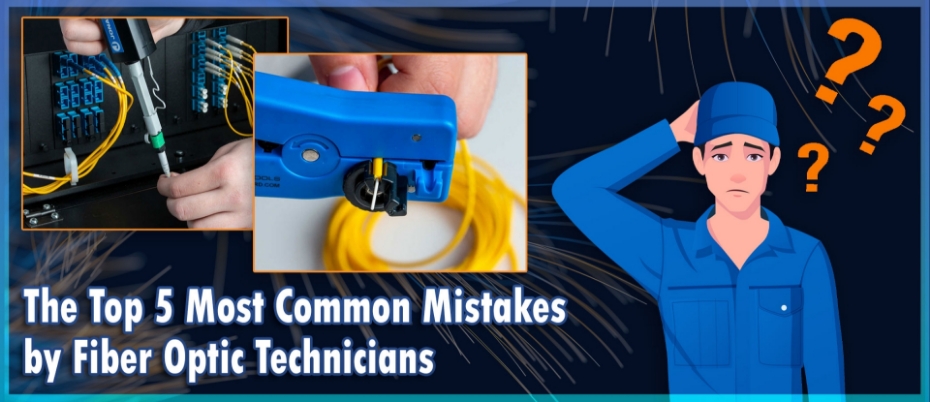Even seasoned technicians sometimes trip up on avoidable errors that reduce signal quality, shorten cable lifespan, or introduce unplanned downtime. Based on insights from Jonard Tools, here are the five most common mistakes—and how you can fix them right at the start of a job, using the right tools and procedures.
1. Not Cleaning Fiber Connectors Properly
What Happens: Dust, oils, and debris on connector end faces cause insertion loss and back reflections.
Why It Matters: Connector contamination is one of the leading causes of performance issues—these tiny contaminants can degrade or even nullify a fiber link.
Fix It:
-
Always inspect each connector under a microscope before mating.
-
Clean using recommended wipes and solvents only—never reuse contaminated swabs.
-
Re-inspect post-cleaning to ensure top-quality finishes.
2. Improper Fiber Splicing
Common Errors: Misalignment, insufficient cleaning before the splice, or incorrect fusion splicer settings.
Impact: Results in weak connections and increased attenuation.
How to Avoid It:
-
Always clean bare fibers immediately after stripping—not before—then cleave for a perfect end face.
-
Calibrate the fusion splicer for environmental conditions and cable types.
-
Confirm splice quality using a microscope or OTDR.
3. Bending Fiber Optic Cables Too Tightly
Problem: Exceeding the cable’s minimum bend radius can introduce micro- or macrobends, increasing signal loss.
Results: Reduced performance—often delayed or intermittent.
Prevention:
-
Know your cable’s minimum bend radius (typically 10× the cable diameter).
-
Use structured bend-radius guides in trays and junction boxes.
-
Secure slack carefully—loop it gently without coercing tight bends.
4. Incorrect Fiber Termination
Mistakes: Using wrong connectors (e.g., mixing PC, UPC, APC) or poor alignment during termination.
Consequences: Mismatched polarity, inconsistent inserts, and connector damage.
Best Practices:
-
Match connectors to cable specifications and connector type.
-
Follow termination instructions meticulously—strip, clean, cleave, insert.
-
Inspect every terminated connector under a microscope before commissioning.
5. Choosing the Wrong Connector or Not Cleaning Properly Ends
Issue: Using incompatible connector types or skipping critical cleaning steps—e.g., cleaning before cleaving rather than after.
Impact: High return loss, signal fade, and premature connector wear.
Solution:
-
Standardize connector types across your network runs.
-
Train teams to follow step-by-step processes—strip, clean, cleave, then inspect.
CCT Tools to Support Best Practices
Equip your team with tools designed to prevent these mistakes:
-
Precision Fiber Strippers & Mid‑Span Slit Tools – For clean, damage-free strip jobs.
-
High-End Fiber Cleavers – Make clean, perpendicular cuts—essential for low-loss splicing.
-
Inspection Microscopes – Check connector end faces at every stage, confidence-in-hand.
-
Fusion Splicers (calibrated models) – Designed for consistent performance under real-world conditions.
-
Bend-Radius Spools and Slack Management Kits – Protect cable geometry, avoid unnecessary tension.
By focusing on these five areas—clean connectors, correct splicing and termination, mindful bending, and using the right tools—you’ll drastically reduce field errors and boost system reliability. With CCT’s dedicated portfolio and best‑practice workflows, your installs can consistently achieve top-tier performance.
























